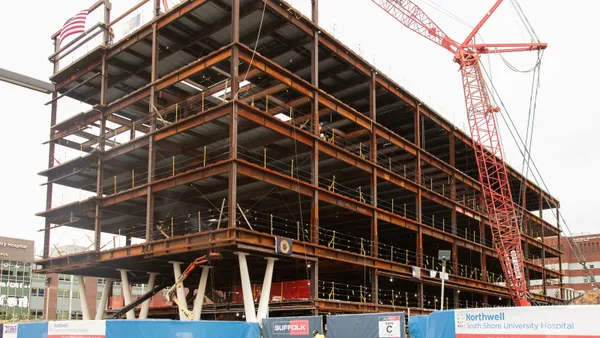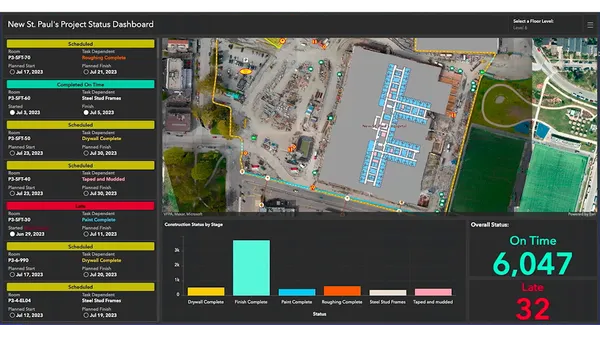In a recent USG Corporation + U.S. Chamber of Commerce Commercial Construction Index press release, Christopher Griffin, president and CEO of USG Corporation, noted: “The construction industry is changing more rapidly than ever before, and advanced technologies present a big opportunity to work smarter, faster and safer — especially when there are millions of construction jobs unfilled.”
In today’s competitive construction environment, the industry understands the critical role technology plays throughout the lifecycle of the project. The implementation of software—such as accounting/enterprise resource planning (ERP), estimating, project management and scheduling, bid management, and building information modeling (BIM)—provide the data necessary to increase productivity, improve communications and streamline operations.
But there is another area of the construction business that can also benefit greatly from technology to help enhance operational efficiencies and the bottom line: asset management.
After labor, the second biggest expense of running a construction business is equipment and assets. The most common indicator of poor asset management is inefficient operations and waste, which contributes to:
- Loss of productivity. Looking for lost assets for a project operation or damaged assets for repair can cost a contractor hundreds of man-hours per job. A McKinsey article notes, “As engineering and construction companies have grown and diversified, they must increasingly deal with internal silos organized by geography, business unit, asset class or any combination of these. The result is that they struggle to use their resources as effectively as possible.”
- Unbudgeted expenses. Preventable costs that contractors regularly incur include emergency rentals to sub in for a breakdown caused by neglected maintenance or repurchases of parts because the team couldn’t find the ones they already own. This wastes hard cash unnecessarily and impacts already tight profit margins.
- Missed revenue opportunities. When a fleet is underutilized, opportunities for additional revenue are missed. But when contractors utilize equipment at an optimal rate, they can maximize billable hours from their machinery, reduce unbudgeted expenses and increase profits to grow the bottom line.
Construction Asset Tracking: No Longer a Luxury
In 2019, 22% of general contractors reported using “equipment tagging” to track and manage their assets, but it is projected to increase to 42% by 2022. [USCC] Construction asset tracking software has evolved from being a competitive advantage, with better cost control and data supporting more accurate bid rates, to a necessity because it improves job site safety, increases labor and operational productivity and allows for better schedule management.
It also addresses two more significant industry issues: the skilled labor shortage and high-risk work.
- Labor Shortage: 61% of contractors reported having difficulty finding skilled workers. [USCC] The construction industry simply isn’t attracting enough young people into the trades to fill all of the needs. The skilled labor shortage issue isn’t going away anytime soon, which means construction firms must do more work with less qualified people. Part of that answer is found in effective asset management because contractors who are efficient with the equipment they own are also more productive.
- Mitigating Risk. In construction, risk comes from many directions. A misplaced or broken piece of equipment can set a project back by hours, if not days. Even a small delay can have wide implications on the project schedule. Legal repercussions can occur when equipment is not properly maintained or inspected, as faulty equipment can cause injury or death on the job site. When a worker is injured, it can result in Occupational Safety and Health Administration (OSHA) violations with fines, months of legal battles or increased workers’ compensation and general liability insurance premiums. Data provided by asset trackers can aid in detecting preventable safety incidents where equipment is involved.
As much as 20% [GS1] [CTW2] of a typical contractor’s mixed-asset fleet is unaccounted for, which is a lot of lost money. To gain 360° visibility on assets, software is necessary. Trackers are placed on equipment and feed the critical telematics data to a software to interpret for visibility and enhancing equipment performance.
Construction asset tracking software is designed to provide data about equipment status, utilization and maintenance schedule. This technology helps construction equipment managers make informed decisions on renting, owning or moving mixed assets. The added visibility gives contractors enhanced control over job costing across all projects. And with less time wasted searching for equipment, higher utilization of equipment and fewer unbudgeted expenses, contractors using this advanced construction software become more efficient with their equipment and assets.
A Look Ahead
The outlook for the construction industry remains upbeat. A 2020 outlook report noted: “Digital technologies are changing the way many E&C companies operate … looking ahead to 2020, these inherently disruptive technologies have the potential to provide the efficiency, productivity and safety breakthroughs the industry has sought for decades.”
The construction industry is constantly shifting, and technology will continue to push the boundaries of what savvy construction firms can achieve. To remain competitive and nimble, advanced technologies, such as asset tracking software, must be integrated into operations.










